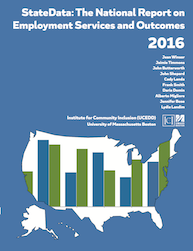RRTC on Advancing Employment Composite Indicator Research
What?
Analysis to describe the relationship between state employment system characteristics and employment outcomes for individuals with intellectual and developmental disabilities (IDD).
Why?
To better understand higher-performing state employment systems.
